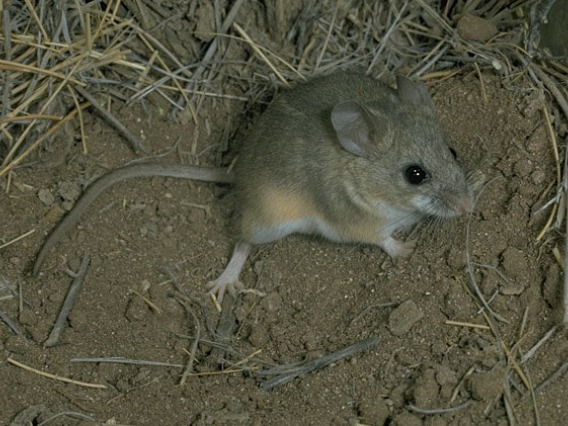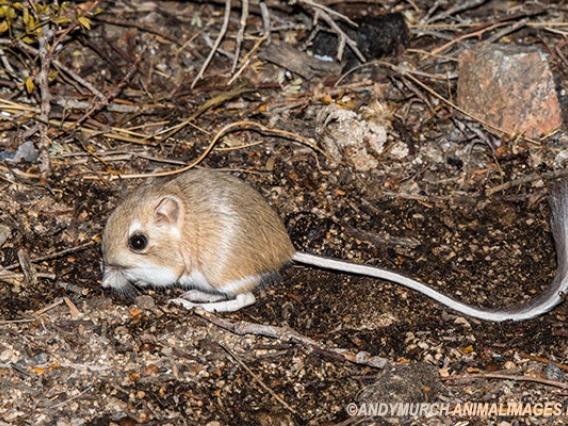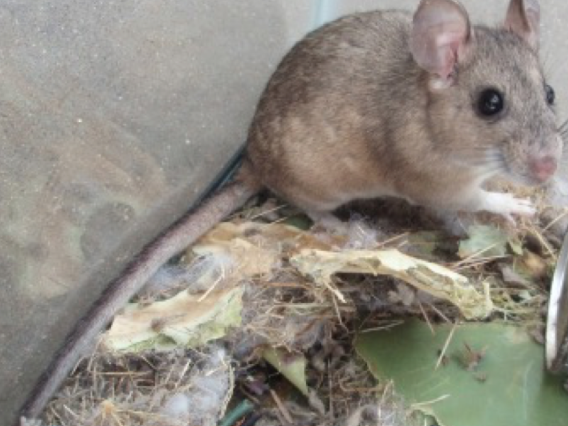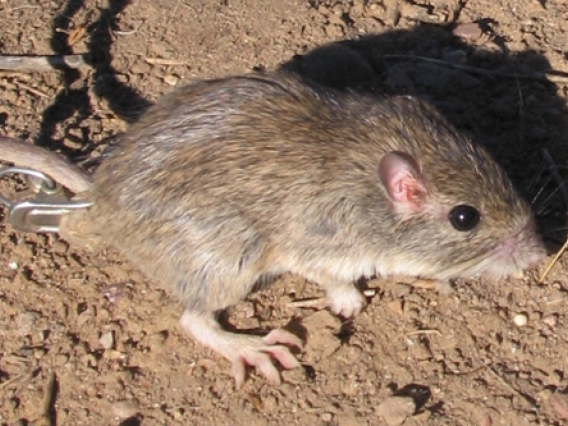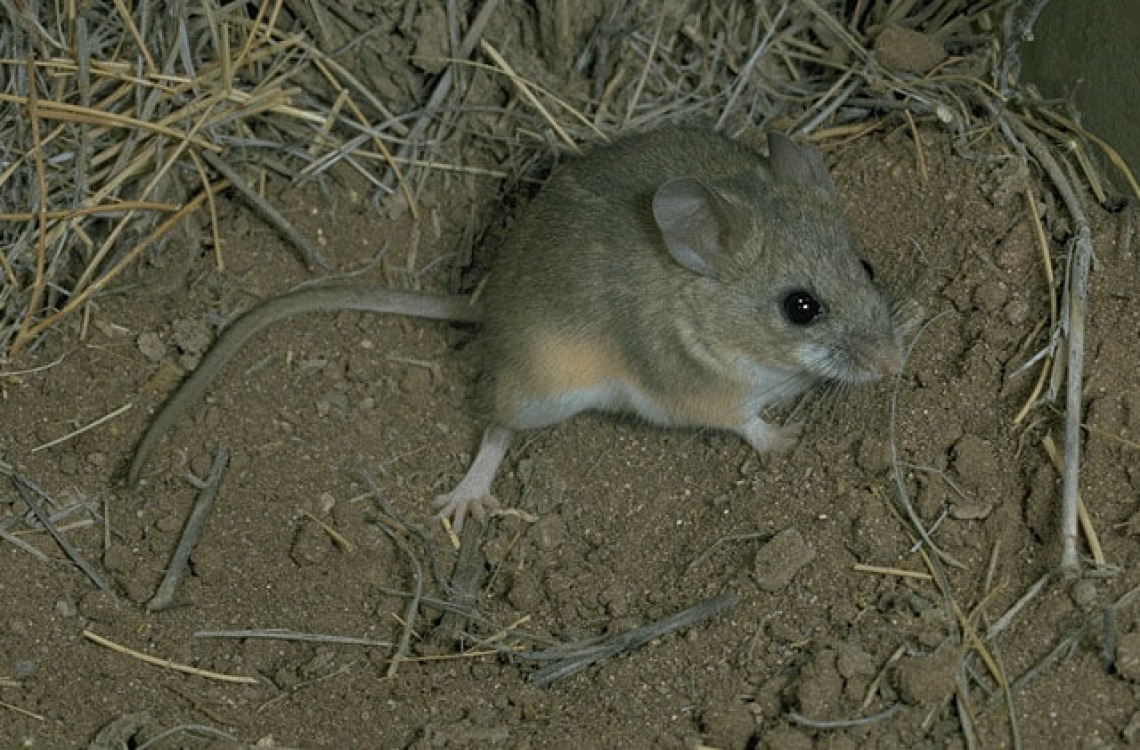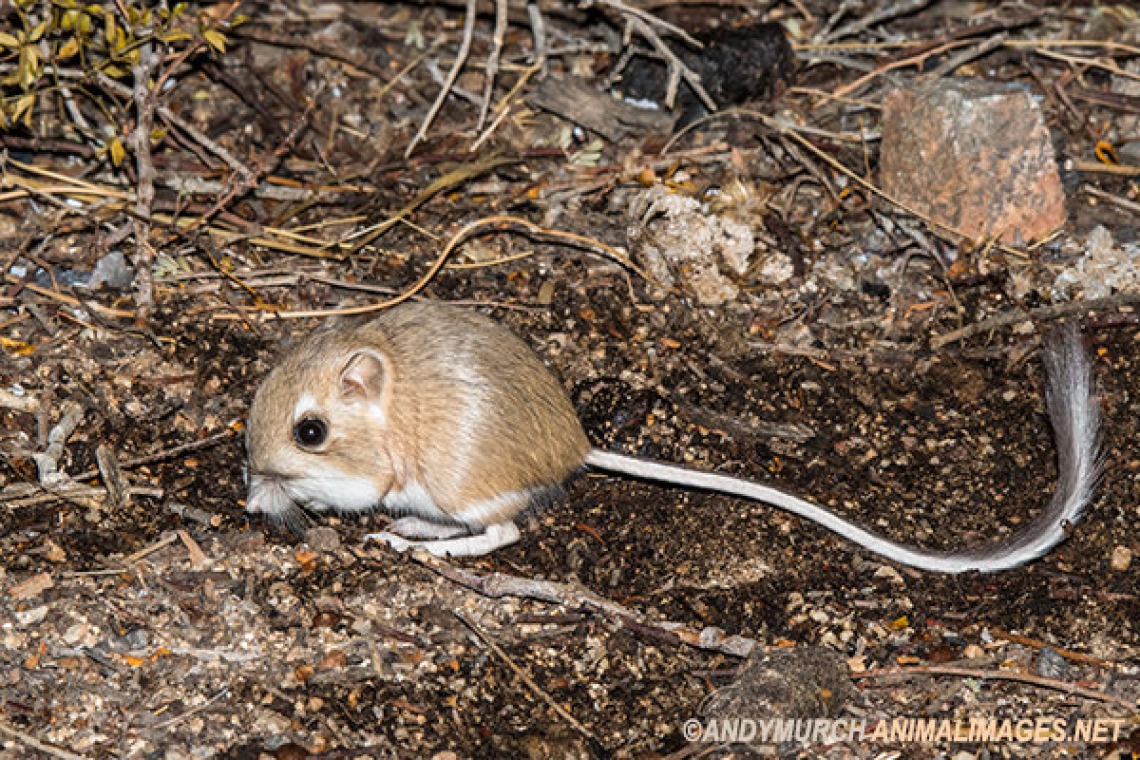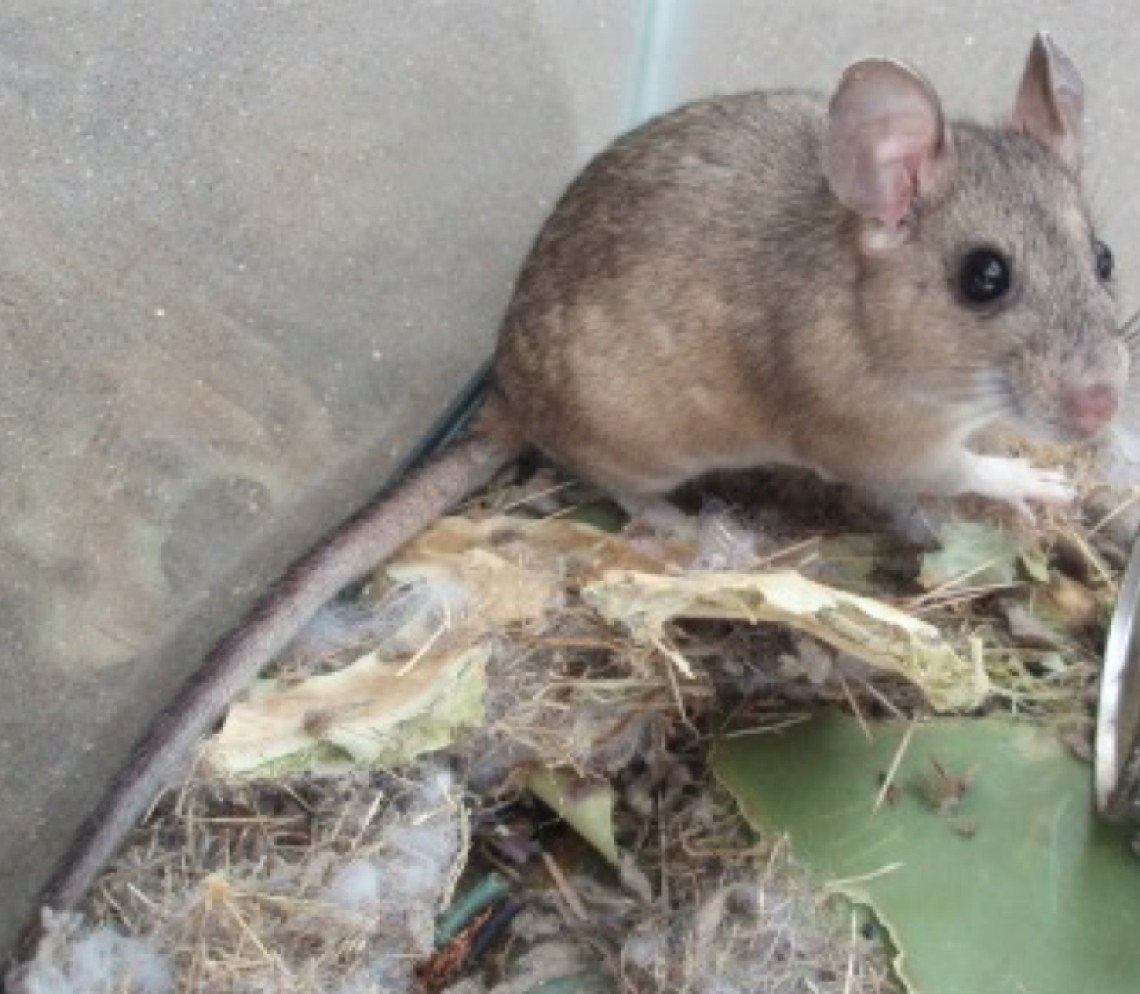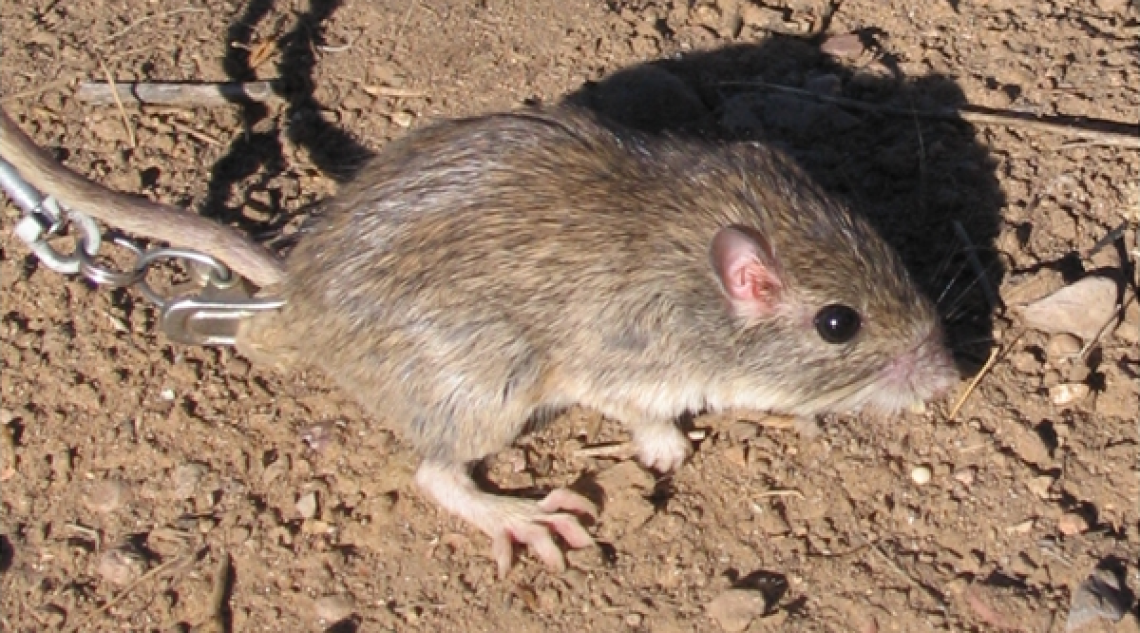
Seed predators and plant species diversity
Granivores (seed eaters) are known to be important in plant communities – e.g. rodents, ants, birds.
If they switch feeding preference to common seeds (frequency-dependent predation) they promote species coexistence.
Tumamoc has diverse community of seed eating rodents:
Right to left, Top: Cactus mouse; Kangaroo rat. Bottom: Packrat; Pocket mouse (three species on Tumamoc Hill).
In experiments with common species of winter annual plants we have shown that each seed type IS preferred by these rodents when common than when it is rare.
- We took seeds of 3 winter annual species: Erodium texanum, Pectocarya recurvata, Plantago insularis (pictured in the header above) and placed them on the surface of sand in cafeteria-style trays at night.
- Seeds were placed in 18 trays in 4:1:1 ratios, with each species being the common one in 6 replicate trays. Trays were set up and placed in creosote flats at the Desert Laboratory in the evening and retrieved the following morning when the number of seeds remaining were counted.
- The results showed that each species was preferentially removed by rodents when it was the high-frequency species (Fig. 1).
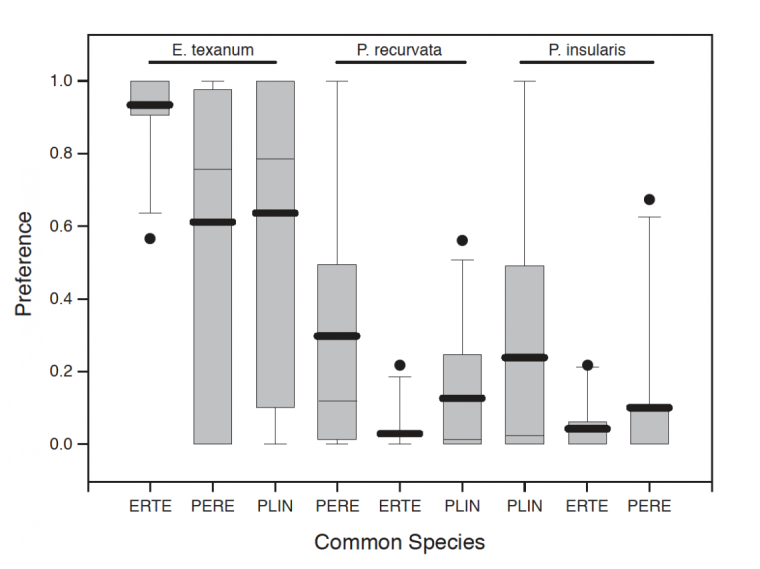
Figure 1. Preference for each species plotted for each frequency treatment. Each species has a higher preference value when it is the common species. The three frequency treatments consisted of one common species and two less common species in a ratio of 4:1:1. The underlined species names at the top of the graph are the species for which the preference value is plotted. The X-axis gives the name of the species that was common. Thus the first three bars on the left give the preference values for E. texanum when, first, E. texanum (ERTE) was the common species, second, when P. recurvata (PERE) was common and, third, when P. insularis (PLIN) was the common species. The thick horizontal line represents the median, thin line the mean, gray bars extend from the 25% to 75% quantiles, whiskers bars extend from 10% to 90% quantiles, and dots indicate outliers.
This preference for each species when it is common stabilizes species coexistence and is an important mechanism for maintaining species diversity in desert plants.
For more on frequency-dependent seed predation at the Desert Laboratory see:
Horst, J. L. and D. L. Venable. 2018. Frequency-dependent seed predation by rodents on Sonoran Desert winter annual plants. Ecology 99:196-203. PDF


